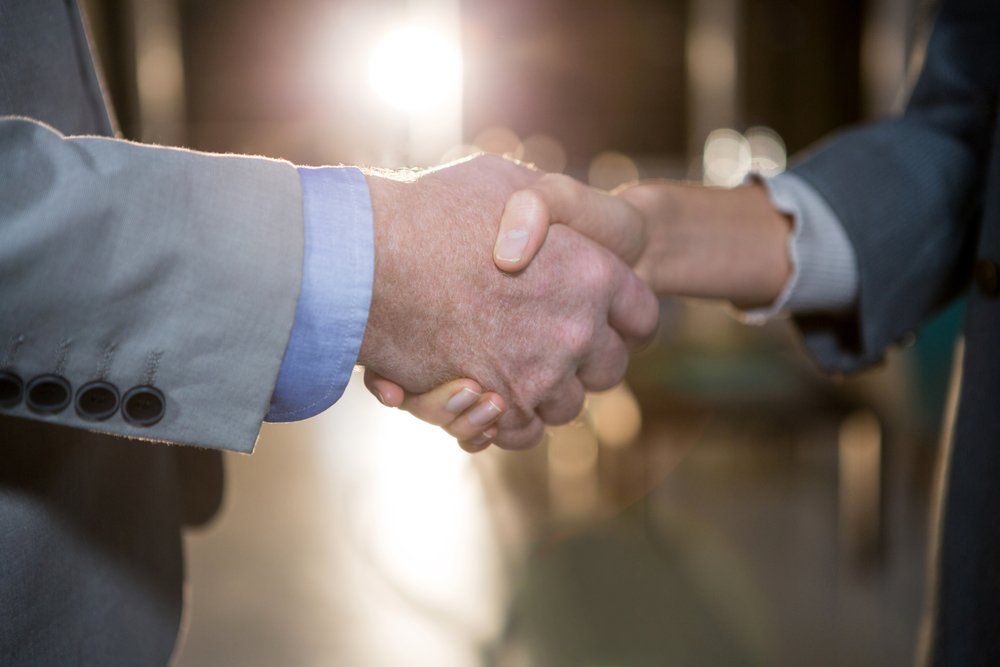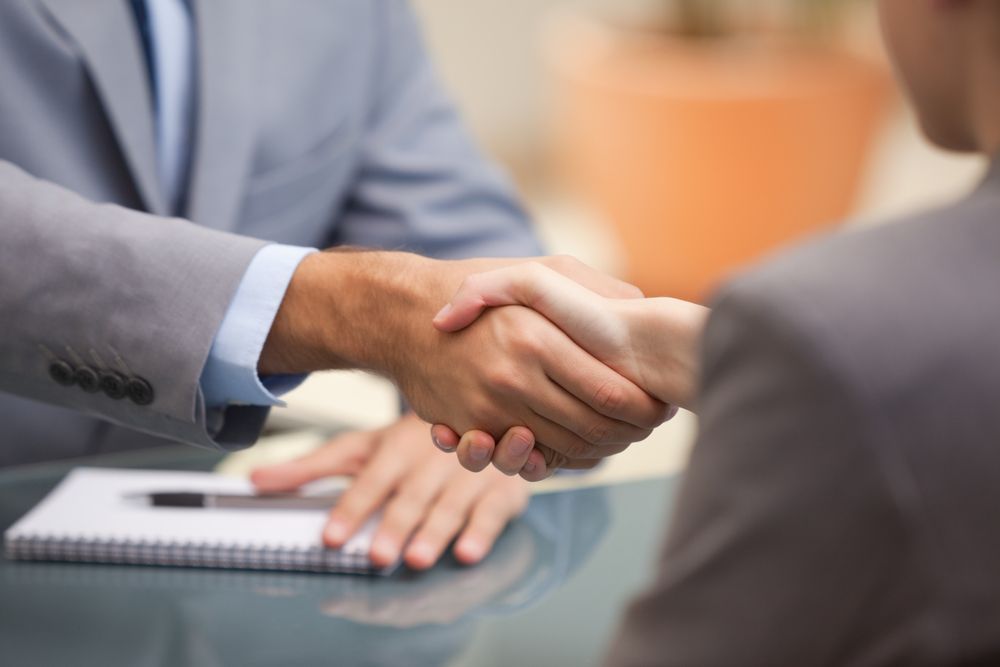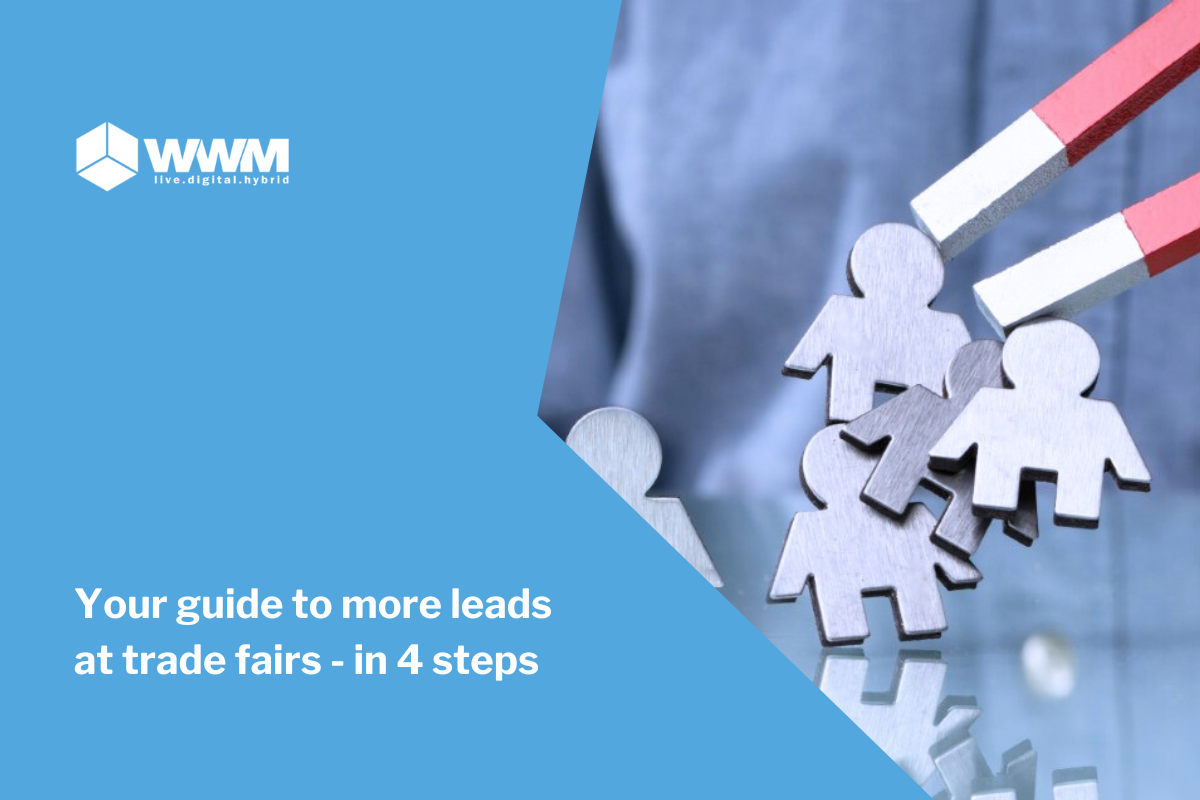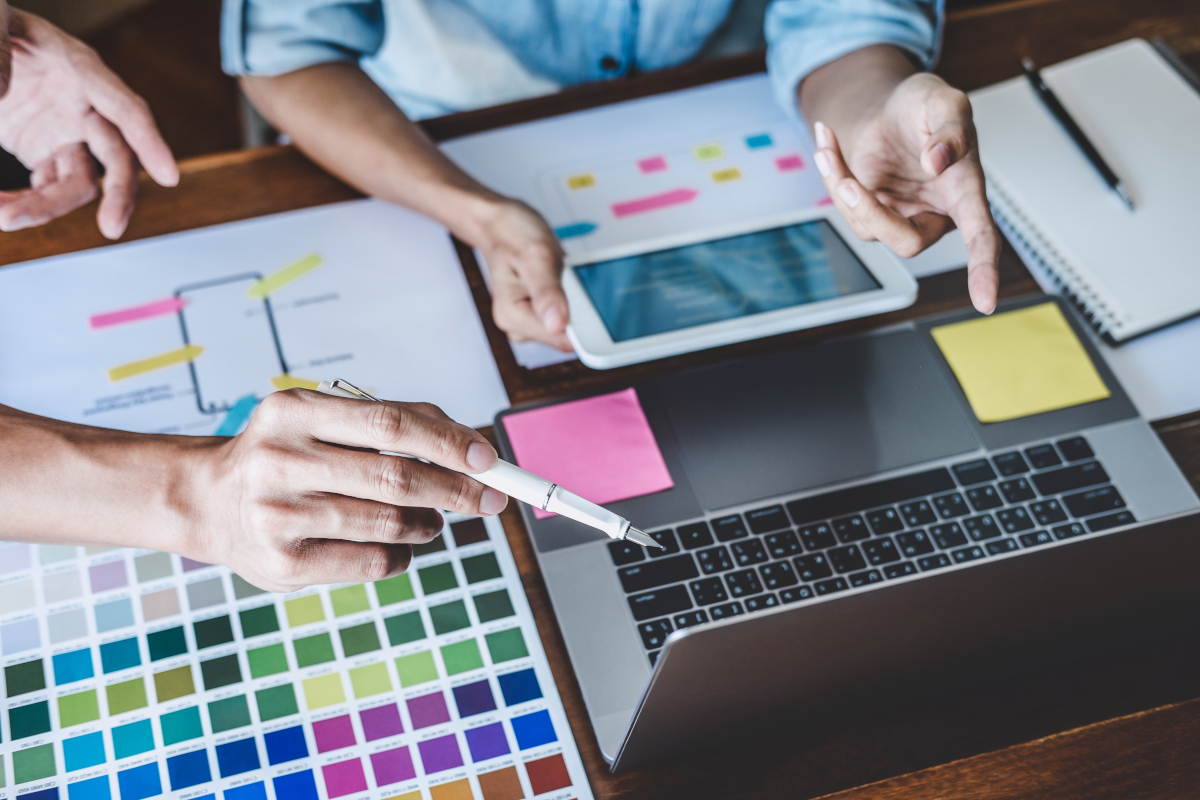Your guide to more leads at trade fairs - in 4 steps
Participating in trade fairs is an investment in visibility, image and new customer contacts. But in reality, many companies experience exactly the...
5 min read
 Laura Wirtz
:
Friday, 3. January 2020
Laura Wirtz
:
Friday, 3. January 2020

In my last blog post, I explained how to turn your exhibition stand into a visitor magnet. You now know how to attract trade fair visitors to your stand. But how do you get them to stay? How do you have successful conversations at your stand?
To be able to do anything successfully, you need to know what success means to you. This is primarily related to defining your goals. First of all, you need to think about what you want to achieve with your trade fair appearance.
Is your goal to increase awareness of your company? Then you need to stand out from the crowd and attract more attention than your competitors (for example with the help of a live act). But you also want your company to remain in the minds of visitors after the trade fair. To do this, you need a message that visitors can remember and you need to make this clear. The measures look different again if your aim is not to increase awareness of your company, but to present a new product. In this case, you should focus primarily on the exhibition stand design. It should go hand in hand with the product, be less text-heavy and use multimedia to showcase the product in question. The expertise and creative ideas of trade fair designers and stand builders are particularly helpful here. Other measures are important if your aim is to increase customer loyalty. So you see, until you have defined your goals, it is difficult to name the measures that will increase your trade fair success.
Exhibition stand personal are important for any type of trade fair presentation. They represent your company and serve as a direct point of contact for potential customers. Expensive preparations that take into account catering, stand design and promotional gifts are ultimately of no use to your company if the stand personnel are no good.
At your trade fair stand, you (or the stand personnel on your behalf) are the host - make sure that your guests feel comfortable. Create a pleasant atmosphere for conversation, ask the person you are talking to what they would like to drink and be generally attentive and courteous.
For the actual sales talks, your stand personnel should definitely have these essential qualities: Professional competence, stress resistance, openness and flexibility. It should be clear that professional competence is a must. Untrained apprentices or compulsively smiling hostesses are of no use to anyone if they are unable to answer trade fair visitors' questions properly. Resistance to stress is particularly important during peak times at the trade fair. If many visitors come to your stand at once, your staff should be able to manage the situation in such a way that nobody feels disadvantaged in the end. The last two characteristics, openness and flexibility, are always important when you are in direct contact with people. Your employees need to be open and flexible in order to engage honestly with different people with different problems, interests and concerns.
This brings me to the next point, because honest interest is the be-all and end-all in conversations with customers. What I mean by this, however, is not the customer's interest in you, your products or your company, but your interest in the customer. Always listen attentively to your stand visitors, even if you have already heard the problem several times; answer them very carefully, because our conversation partners notice when a smile is false, they are not being listened to and interest is simply being feigned.
First and foremost: Don't be a vulture that pounces directly on visitors approaching your stand. Most trade fair visitors will want to take a quick look around your stand to get a first impression. If you go straight into the sales talk, some visitors may feel uncomfortably rushed - remember, you are the host and want your guests to feel comfortable. Wait for a signal from the visitor - perhaps raising their head to look for someone to talk to - before you start talking to them. However, it is also important not to wait too long, otherwise you will come across as disinterested and arrogant.
If you then enter into verbal communication, get to know the person you are talking to first. Introduce yourself and ask the other person which company they work for and in which area. Ideally, this will allow you to assign your conversation partner to a target group and adapt your approach accordingly. This also includes finding out to what extent the stand visitor already knows your company or your products. Qualifying questions, such as “Have you heard of our products?”, are suitable for this. In this way, you can make the transition from the introductory part to the actual sales pitch and find out at what depth of information you can start the conversation.
From here on, the following applies above all: Avoid closed questions (questions that can be answered quickly with a “yes” or “no”). After all, a sales conversation is a dialog - not a monologue. In this way, you automatically signal to your conversation partner that you are interested in their concerns so that they will feel better advised. Make notes of the things you learn about the customer, their problem and their priorities - either after the conversation or during it (but in such a way that the customer still feels they have your full attention). This allows you to refer back to personal information during the follow-up, which you can then use in a personalized approach. The more tailored and specific your approach is to the prospective customer, the more likely this visitor is to become a customer. This approach is known as session management.
You can increase the success of your trade fair talks by addressing your visitors using multiple channels. Appeal to several senses of the person you are talking to. Not just the sense of hearing. Show your visitors your product so that they can see it and hand it to them or let them touch it so that they can feel it. If smell plays an important role (e.g. with perfume), make sure that your visitors can smell it too. The more senses you appeal to, the more intense the experience will be for the potential customer and the more likely they are to remember it. So it's no wonder that many people value live communication so highly. After all, this is clearly where the greatest potential lies for appealing to the various sensory modalities - take advantage of it!
After the actual trade fair meeting is over, it is important to ensure that the effort you have put into it bears fruit. These fruits are first of all the conclusion of the contract. Most deals are not concluded during the trade fair, but after it. So in order to reap the rewards, you need the potential customer's contact details. Don't just give them your business card and a flyer and rely on them to get back to you. Also take the contact details of your counterpart and, ideally, make an appointment for a specific meeting in the near future. After the trade fair, you should schedule a follow-up and refer back to the personal information you received during your conversation with the visitor.
A little extra that you can have ready is a special gift for visitors with whom you had a good, promising discussion at the trade fair. It should usually be of a higher quality than the giveaways that each of your stand visitors receives. This will make your conversation partner feel particularly appreciated, keep the conversation in even more positive memory and make them feel as if they have been rewarded even more at the end. This also increases the openness of the conversation partner for the next sales meeting. As the saying goes? Small gifts keep friendships alive.
In hindsight, it is important to be able to make a statement about how successful your efforts were. So what ways are there to measure your success? For example, you can use a comparison between the total number of visitors to your stand and the number of contacts that resulted - similar to online marketing. How many unique visitors do I have and how many leads (contacts) do they generate? There are analysis tools that provide a precise overview of the behavior of stand visitors. For example, you can use event metrics to find out how many people visited your stand, the proportion of returning visitors and how much time they spent at your stand. This allows you to make a statement about the success of your communication and to analyze and optimize your strategy. To give you an example: If the length of time your visitors spend at your stand is rather short, you should work on your customer approach and check at the next trade fair to see if you can identify any differences.
There are various adjustments you can make and numerous measures you should take to increase the success of your trade fair appearances. In this blog post, I have provided you with some tips on how to conduct successful trade fair talks. Get to know the people you are talking to and put your findings into practice at the next trade fair.

Participating in trade fairs is an investment in visibility, image and new customer contacts. But in reality, many companies experience exactly the...

It was finally time again! It was my third time at FIBO. Back then it was still in Essen. I set off with two colleagues in good time to be one of the...

We live in a world in which social media has become indispensable. Social platforms are part of our everyday lives. Even if many demonize it, social...